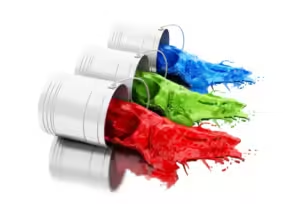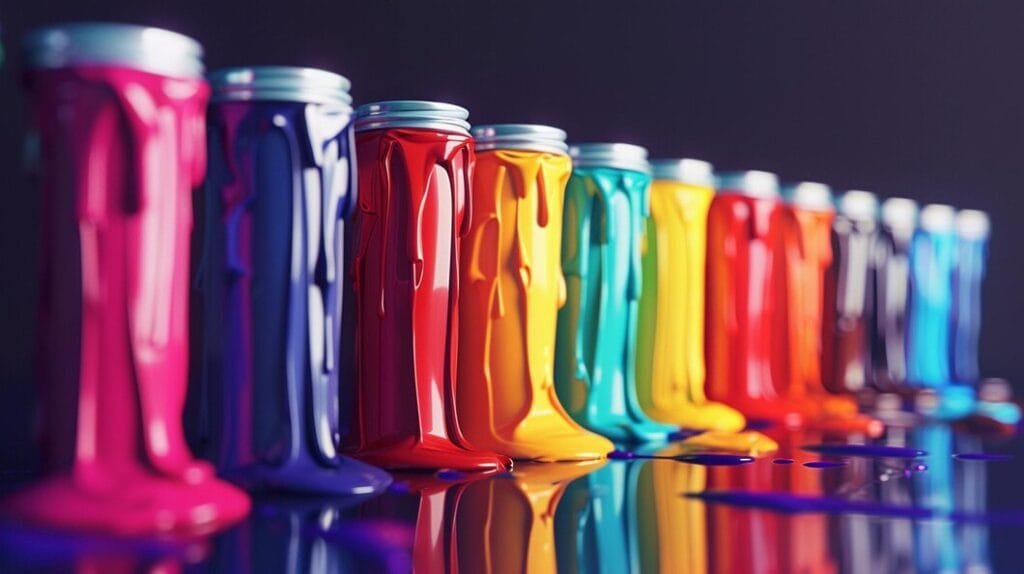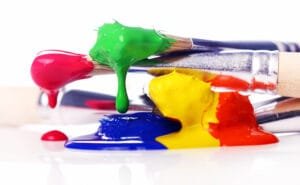Introduction to Paint Quality Assurance
Paint quality assurance is a critical aspect across multiple industries, including automotive, construction, and manufacturing. Its primary purpose is to ensure that the paint used not only meets but also surpasses the established standards of durability, appearance, and performance. As the demand for high-quality finishes continues to grow, ensuring superior paint quality becomes indispensable to maintain competitive advantage and customer satisfaction.
In essence, paint quality assurance encompasses a breadth of processes and tests aimed at validating the attributes of the paint. This involves rigorous examination and evaluation of the paint’s physical and chemical properties to ascertain its capability to withstand various environmental and operational stresses. Specific tests might include assessments for color consistency, adhesion, gloss level, viscosity, and resistance to weathering and corrosion. These tests are imperative in determining whether a paint product will provide long-lasting protection and aesthetic appeal under different conditions.
The importance of paint quality assurance is underscored by its role in preventing potential issues such as premature degradation, peeling, fading, and other forms of paint failure that can lead to costly repairs, replacements, and customer dissatisfaction. In today’s quality-conscious market, establishing a robust quality assurance system is not just a regulatory compliance requirement but also a strategic business imperative. By implementing stringent quality control measures, companies can enhance product reliability, reduce wastage, and uphold their brand reputation.
Moreover, the process of paint quality assurance is a collaborative one, involving manufacturers, quality control personnel, and end-users. It requires a synergetic approach where feedback from each stakeholder is integrated into the continuous improvement of paint products. Hence, a comprehensive understanding of paint quality assurance is vital for businesses that aim to deliver top-tier products and foster long-term success in an increasingly competitive landscape.

Key Components of Paint Quality
Understanding the key components that define high-quality paint is essential for those seeking durability, aesthetic appeal, and resilience against environmental challenges. Several critical elements contribute to the overall performance and appearance of paint, which include color consistency, viscosity, drying time, adhesion, and resistance to environmental factors.
Color Consistency is fundamental to paint quality as it ensures a uniform appearance across all applied surfaces. High-quality paint maintains the same shade and intensity from batch to batch, providing a seamless look without noticeable variations. This is particularly crucial for large-scale projects and professional applications where precision is vital.
Viscosity affects the application process and the finish of the paint. It refers to the thickness or thinness of the paint, which determines its flow and ease of application. Proper viscosity ensures that the paint spreads evenly, covers effectively, and does not drip or run excessively. Paint with the right viscosity minimizes effort during application and improves finish consistency.
Drying Time is another critical factor, determining how quickly the paint sets and hardens. Faster drying times can be beneficial for speeding up projects and reducing downtime, but they must be balanced to avoid issues like poor adhesion or surface imperfections. Optimal drying time contributes to the longevity and durability of the painted surface.
Adhesion is crucial for the paint’s durability and longevity. High-quality paint should adhere strongly to the surface, whether it is wood, metal, plaster, or drywall. Good adhesion prevents peeling, cracking, or bubbling, thereby ensuring that the paint remains intact and looks good over time.
Effective Resistance to Environmental Factors is also paramount. Quality paints are formulated to withstand UV rays, moisture, chemicals, and physical wear. UV resistance helps in maintaining color vibrancy and preventing fading under sunlight. Moisture resistance guards against issues like mold and mildew, while chemical resistance ensures that the paint can withstand cleaning agents and other chemicals without deteriorating.
Each of these elements plays a significant role in ensuring that the paint performs well under various conditions and maintains its appearance over time. By considering these factors, individuals and professionals can make informed decisions about the best paint for their needs, thereby ensuring superior paint quality and lasting results.
The Role of Raw Materials
The quality of raw materials is paramount when it comes to producing superior paint. Each component—whether pigments, binders, solvents, or additives—plays a crucial role in defining the paint’s overall performance, appearance, and durability. The selection and quality of these raw materials can significantly impact the final product, making their evaluation and sourcing essential in the paint manufacturing process.
Pigments are responsible for providing color and opacity to the paint. High-quality pigments ensure vibrant and stable colors that resist fading over time. On the other hand, inferior pigments may result in inconsistent coloration and reduced durability. Thus, reputable suppliers who can consistently provide pure and well-processed pigments are vital for maintaining paint quality.
Binders or resins serve as the adhesive component that binds pigments to the painted surface, contributing to the paint’s film formation, durability, and adhesion properties. The type and quality of binders used can affect factors such as flexibility, hardness, and UV resistance. Selecting high-grade binders ensures a resilient and long-lasting paint finish, underscoring the importance of a reliable supply chain for these materials.
Solvents are used to dissolve binders and pigments, facilitating the application of paint. They influence the drying time and viscosity of the paint. The purity and composition of solvents must be carefully controlled to prevent issues like uneven drying or odor problems. Reputable suppliers provide solvents that meet rigorous industry standards, contributing to the consistency and safety of the paint.
Additives play a supporting role by enhancing certain properties of the paint, such as mildew resistance, drying time, and flow. These substances, though used in smaller quantities, can significantly alter the performance and application characteristics of the paint. High-quality additives sourced from trustworthy suppliers ensure the paint meets specific functional requirements.
The source and composition of raw materials are integral to maintaining the desired quality of paint. Therefore, establishing strong, reliable relationships with reputable suppliers is a critical strategy in assuring superior paint quality. Consistent monitoring and evaluating raw materials further support the production of reliable, high-performance paints.

The Paint Manufacturing Process
The paint manufacturing process is a multifaceted operation that encompasses several stages, each crucial to ensuring superior paint quality. The journey begins with mixing and blending, where raw materials such as pigments, resins, solvents, and additives are combined. Quality control at this juncture involves precise measurement of components and thorough mixing to achieve a uniform consistency. Any deviations can lead to inconsistencies in color, texture, or performance.
Following mixing, the next critical phase is milling. During milling, the paint undergoes dispersion, which breaks down agglomerates of pigments and disperses them evenly throughout the mixture. Here, particle size distribution plays a pivotal role in the final appearance and performance of the paint. Quality checks during milling involve monitoring particle size and ensuring it meets specified standards, as well as assessing the evenness of dispersion.
The subsequent phase is let-down and thinning, where the concentrated paste from milling is diluted with solvents or water to achieve the desired viscosity. Quality assurance at this stage includes viscosity testing and ensuring the paint flows correctly without compromising its covering power or adhesion properties.
The penultimate step in the paint manufacturing process is color matching and adjustment. This is where precise color formulations are fine-tuned to meet the exact specifications of the desired shade. Quality control measures encompass utilizing spectrophotometers and other colorimetric tools to ensure the paint batch matches the standard color chips within tolerances.
Finally, the paint undergoes packaging, where it is filled into containers. Quality control during this stage involves ensuring container integrity, proper labeling, and the absence of contaminants. Common issues such as sedimentation, skinning, and improper sealing can arise but are mitigated through rigorous inspection and adherence to established protocols.
Overall, each stage of the paint manufacturing process is systematically controlled to safeguard the paint’s consistency, reliability, and overall quality, thus ensuring it meets end-user expectations and industry standards.

Testing and Standards in Paint Quality Assurance
Ensuring superior paint quality involves a series of rigorous tests designed to assess various attributes of paint products. One of the fundamental tests is the viscosity measurement, which evaluates the paint’s flow properties. This is crucial because appropriate viscosity ensures that the paint can be applied evenly and with ease, impacting the overall finish.
Color matching is another vital test in paint quality assurance. Accurate color matching guarantees that the paint meets the specified hues, ensuring consistency across batches. Advanced spectrophotometers are typically used in this process to compare and verify colors against set standards.
Weathering tests are essential for assessing a paint’s durability under different environmental conditions. These tests simulate the paint’s exposure to sunlight, rain, and temperature fluctuations to predict its long-term performance. Such tests help in determining the paint’s resistance to fading, chalking, and peeling.
Adhesion tests measure the paint’s ability to stick to a substrate. This is determined by applying and subsequently removing adhesive tapes from painted surfaces. A high-quality paint should not easily detach from the substrate, ensuring that it remains intact during usage.
Chemical resistance tests evaluate how well the paint can withstand exposure to various chemicals. These are performed by applying chemicals to the painted surface and observing any changes. Paint that exhibits strong resistance to chemicals is ideal for environments where such exposure is common, such as industrial settings.
Compliance with industry standards like ASTM (American Society for Testing and Materials) and ISO (International Organization for Standardization) is imperative in paint quality assurance. These standards provide guidelines and benchmarks for various properties of paints, ensuring consistency and reliability. Additionally, local regulations may specify specific requirements that paints must meet to be deemed market-ready.
Certifications from recognized bodies serve as a testament to a paint’s quality, as they indicate adherence to these stringent standards. Such certifications are often a deciding factor for consumers and professionals seeking assurance of the product’s quality and performance.

Advanced Technologies in Paint Quality Assurance
In recent years, the field of paint quality assurance has greatly benefited from the integration of advanced technologies, significantly enhancing the accuracy and efficiency of quality control processes. Among the noteworthy innovations are digital color matching systems, automated testing equipment, and advanced analytical tools such as spectroscopy and chromatography. These technologies are pivotal in ensuring superior paint quality, catering to the ever-evolving demands of the industry.
Digital color matching systems have revolutionized the process of maintaining color consistency across batches of paint. These systems leverage sophisticated algorithms to analyze and match colors with astonishing precision, reducing the likelihood of color discrepancies that can lead to customer dissatisfaction. By using digital color matching, paint manufacturers can achieve a higher level of uniformity, ensuring that the product meets stringent quality standards.
Automated testing equipment represents another critical advancement in paint quality assurance. These instruments are designed to perform a wide range of tests, from viscosity and drying time to adhesion and durability. Automation in testing not only accelerates the quality control process but also minimizes human error, leading to more reliable and reproducible results. This enhancement in testing capabilities allows for more rigorous and comprehensive assessments of paint products before they reach the market.
Moreover, advanced analytical tools like spectroscopy and chromatography are playing a significant role in paint quality assurance. Spectroscopy, for instance, is used to analyze the light absorption and emission properties of paint samples, providing detailed information about their chemical composition. Chromatography, on the other hand, separates the complex mixtures within a paint sample, enabling the identification and quantification of individual components. These analytical techniques are invaluable for detecting impurities, ensuring compliance with environmental regulations, and optimizing formulation for the best performance characteristics.
The integration of these cutting-edge technologies in paint quality assurance underscores the industry’s commitment to delivering superior products. By embracing digital color matching systems, automated testing equipment, and advanced analytical tools, manufacturers are well-equipped to meet the highest standards of paint quality, ultimately enhancing customer satisfaction and maintaining competitive edge in the market.
Common Challenges in Paint Quality Assurance
Ensuring the quality of paint can be a multifaceted challenge due to several variable factors. One significant hurdle is the variability in raw materials. The properties of raw materials, such as pigments, resins, and solvents, can significantly influence the final product. Inconsistent quality or supply of these materials can lead to defects in paint batches, driving the necessity for stringent quality control measures. To combat this, implementing robust supplier vetting processes and maintaining comprehensive records of material quality can aid in identifying and mitigating potential inconsistencies before they affect production.
Another critical challenge lies in environmental conditions during the application process. Factors such as temperature, humidity, and even airflow can profoundly impact the application and curing of paint. High humidity can lead to prolonged drying times, while fluctuating temperatures can affect the viscosity of the paint, resulting in uneven application. Addressing these issues necessitates creating controlled environments tailored to the ideal conditions for paint application. Utilizing climate control systems in painting facilities and regular monitoring can help maintain these conditions consistently.
Human errors in both the manufacturing and testing phases also pose significant threats to paint quality. Errors such as incorrect mixing ratios, improper application techniques, and inadequate quality checks can introduce defects and inconsistencies. These errors often result from insufficient training or lack of adherence to standardized procedures. Enhancing training programs, emphasizing the importance of meticulous attention to detail and standard operating procedures, can significantly reduce the incidence of human error. Furthermore, investing in advanced technologies such as automated mixing systems and AI-based quality inspection tools can minimize the reliance on human intervention and ensure a higher degree of precision and consistency in the production process.
Addressing these common challenges in paint quality assurance involves a combination of improved processes, rigorous training, and leveraging modern technology. By focusing on these areas, manufacturers can significantly enhance the quality and consistency of their paint products, thereby meeting and exceeding customer expectations.
Best Practices for Ensuring Paint Quality
Maintaining high standards in paint quality assurance necessitates a multifaceted approach, beginning with regular staff training. Ensuring that all employees, from production line workers to quality control inspectors, receive updated training ensures that everyone is familiar with the latest techniques and standards. Consistent training programs enhance the workforce’s ability to identify and address potential issues before they escalate.
Implementing robust quality control procedures is another crucial element. Establishing standardized protocols for inspection and testing helps in maintaining consistency across batches. For instance, regular spot checks and detailed documentation of each stage of production can help in identifying deviations early. Automated quality control systems can further streamline this process, offering real-time data and reducing the likelihood of human error.
Investing in modern testing equipment is equally imperative. Advanced equipment can provide more accurate measurements and analyses, ensuring that the paint meets all necessary specifications. Cutting-edge technology, such as spectroscopy, can detect minute inconsistencies in the composition which might otherwise be missed by traditional methods. Regular calibration and maintenance of this equipment are essential to retain its accuracy and efficiency.
Fostering strong relationships with raw material suppliers cannot be overlooked. Reliable suppliers who provide high-quality ingredients are integral to producing superior paint. Regular audits and communication with suppliers can help ensure that the raw materials meet the necessary standards and any changes in material quality are quickly addressed.
Finally, the principle of continuous improvement should be a cornerstone of any paint quality assurance strategy. Staying updated with industry advancements and incorporating feedback from both employees and customers can drive innovation and enhancement in production practices. Regular reviews and updates to quality management systems ensure that the company remains at the forefront of quality assurance practices in the paint industry.

